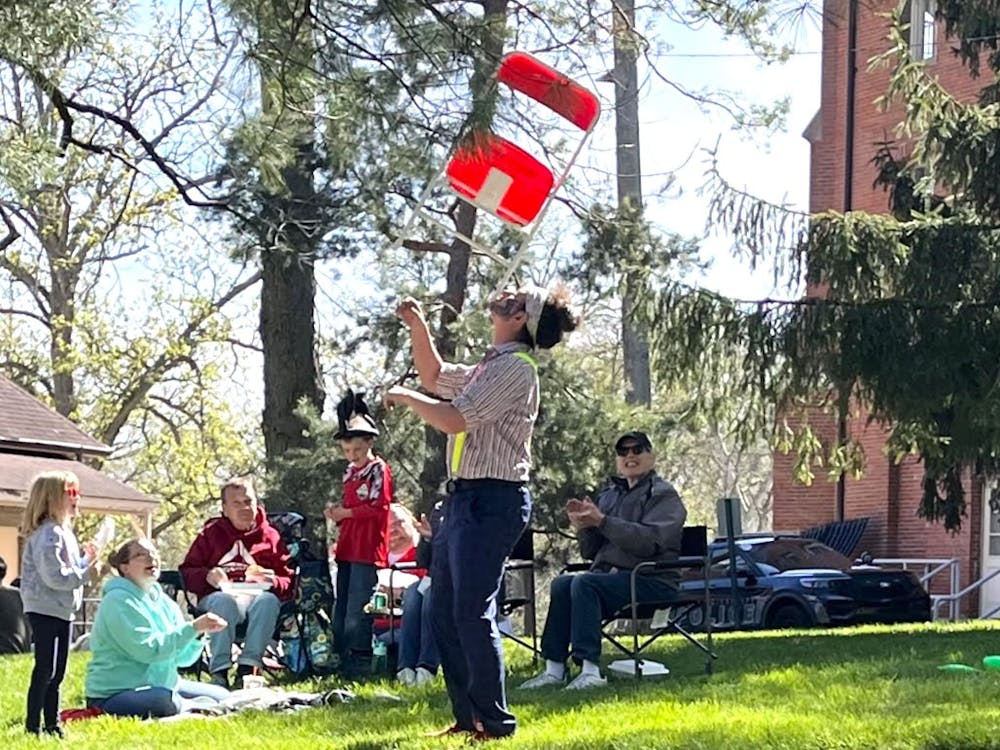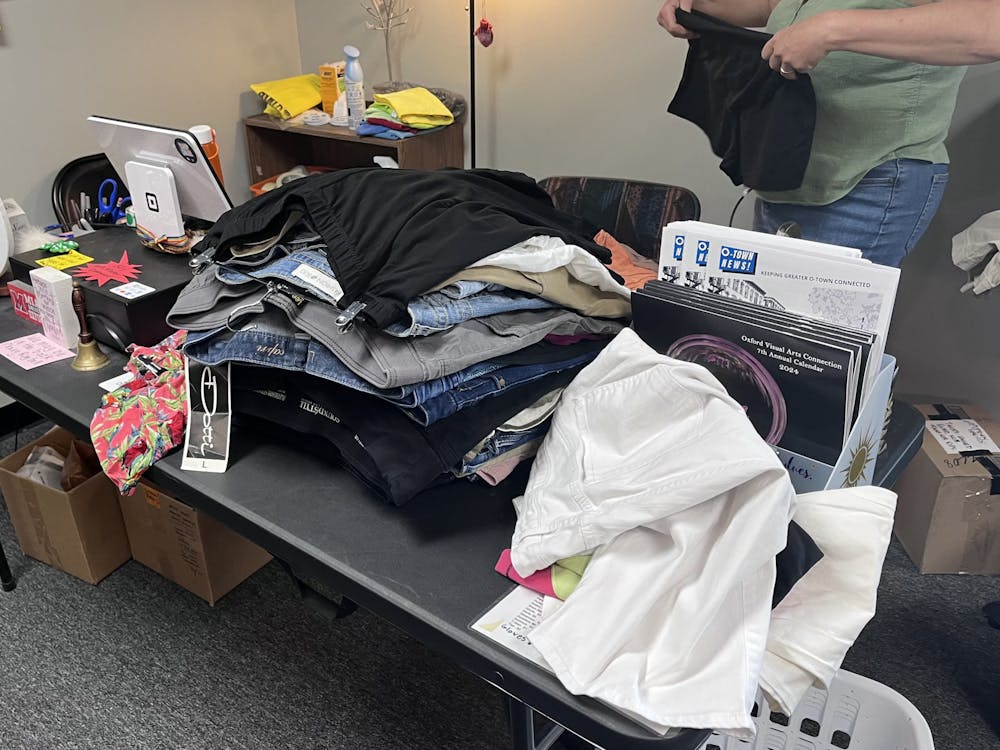Since sending students home in March, Miami University has been planning ways to safely bring students back to campus in the age of COVID-19. But with more than 1,300 cumulative cases a month into the semester, members of the Miami community have raised questions about the university’s response to the pandemic.
The Miami Student examined two peer institutions – Ohio University (OU) and Ohio State University (OSU) – to compare Miami’s response to other schools across the state.
So, how does Miami measure up?
COVID-19 by the numbers
As of Sept. 17, Miami’s Oxford campus had 1,366 cumulative positive cases among students and employees, according to the COVID-19 Dashboard — though the dashboard doesn’t disclose how many people have been tested in total.
This is a sharp increase compared to OU, which had 111 cumulative cases among students and employees as of Sept. 18. But it’s important to note that at the time of publication, OU had only tested 306 students and employees in total, according to the university’s COVID-19 Dashboard, meaning more than a third of those tested turned up positive.
OSU had the highest number of cumulative tests as of Sept. 17, with 2,623 positive coronavirus tests among students and employees. But OSU also has the lowest positivity rate among the three schools, with only 3.5% of students testing positive, according to the Safe and Healthy Buckeyes COVID-19 Dashboard.
Returning to campus
Miami’s Safe Return to Campus (SR2C) Planning and Coordinating Committee worked throughout the summer to plan for a phased-in approach for students to return to campus this fall. After initially delaying residential move-in by a month, President Greg Crawford decided to move forward with the phased-in return beginning last week.
Classes began online on Aug. 17, and students living in residence halls were able to move in beginning Sept. 14. Classes with an in-person or hybrid mode of delivery were able to begin face-to-face learning on Sept. 21.
Just like Miami, OU implemented a phased return to campus in Athens, Ohio.
On Aug. 24, phase one was implemented at OU. Most students were able to begin their fall classes remotely. However, only a limited number of graduate students and undergraduate students in a selected set of academic programs were allowed to return to campus.
Enjoy what you're reading?
Signup for our newsletter
The programs and classes selected to return to in-person learning were ones that required the in-person experience to meet requirements and those that required access to on-campus equipment and facilities, according to OU’s phased return website.
OU’s phase two will begin Sept. 28 and continue through the rest of the semester. As a part of the second phase, at least 7,200 students were invited to return to campus. Those students represent approximately 31% of the Athens campus undergraduate enrollment and 100% of the Athens-based graduate enrollment.
At OSU, in-person and hybrid classes began Aug. 25. The university did not start the semester with a completely online model.
The move-in process at OSU was slow this semester. Students were able to move in beginning Aug. 8. Students from out-of-state were able to move in two weeks before the start of classes, so they could quarantine.
OSU did not force students out of their housing contracts but offered exceptions for sophomores that wanted to live off-campus, said Sam Raudins, senior at OSU and editor-in-chief of OSU’s newspaper, The Lantern.
Miami also offered exceptions for sophomores and upperclassmen who wanted to leave their contracts.
Similar to Miami, all residential students at OSU were required to take a coronavirus test as part of the move-in process.
According to Miami’s Oxford campus dashboard, 2,276 students were tested before moving into residence halls. Of those tests, 22 students tested positive.
Many OU students will have some face-to-face classes, but a majority of classes will continue online, even for students included in phase two. Class sizes may vary, and there is no limitation on how many students can be in a classroom at a time.
OSU has limited the size of in-person classes to no more than 50 students to reduce density on campus and maintain social distancing.
If a student’s class is in person, they are able to attend virtually, as any class that is in person is broadcast over Zoom, Raudins said.
Crawford mentioned in an email to the entire student population that the on-campus student population would be significantly lower than previous years; it would be reduced by approximately 40%.
“I think that President Crawford has made the assertion that we’re doing one of the most extensive testing systems of any university we are aware of,” Provost Jason Osborne said. “[Comparing universities] is kind of comparing apples and bananas and mangos. You can’t just look at numbers and say, ‘Oh, this university is doing better or worse,’ you have to dig into what that is.”
Testing plans and other COVID-19 guidelines
Miami has instituted a plan, partnering with TriHealth, to test more than 3,000 individuals each week through wide-net and surveillance testing, according to the university’s testing and contract tracing website.
According to OSU’s testing website, the university has a multi-pronged testing strategy. OSU’s surveillance testing program consists of mandatory weekly testing of all students in residence halls or university-managed housing and regular testing of samples of asymptomatic undergraduate, graduate and professional students who live off campus.
Raudins is confident in OSU’s testing plan and feels comfortable at OSU.
“I think it is impressive the amount of tests that we have done,” she said. “The testing on top of the dashboard release puts my mind at ease.”
Miami students who are selected for surveillance testing will receive an email from the university to schedule a day and time to complete their test within 48 hours. Miami selects students of all grades residing in on-campus and off-campus housing to be tested.
Nolan Simmons, a junior at OU and news editor at the school’s newspaper, The Post, does not think OU’s testing plan is the most effective.
“Athens is a pretty small town and inviting a big influx of [7,200] students is not going to be good,” Simmons said. “There are not a lot of healthcare options in Athens … This hurts Athens because we are the poorest county in Ohio and have only so many hospital beds.”
On Sept. 14, OU’s President Duane Nellis announced that the university “signed a contract with OhioHealth to provide a significant number of tests” and is working with CVS to allow for rapid testing of the student body, according to an article in The Post.
This will give OU the ability to test between 1,050 and 1,260 people per week.
Miami, on the other hand, has the ability to test 3,000 students and employees per week.
OU is contact tracing students but does not want to disincentivize students from participating if they were at a party or not wearing a mask. Information collected from contract tracing will not be harmful for a student's academic placement, according to The Post’s article.
Contact tracing at Miami is conducted by the Butler County General Health District for the Oxford campus and local health departments for the regional campuses.
A ‘daily health check’ to report body temperature and health status is required for all OSU students, faculty and staff each day they come to campus. Miami is also asking students, faculty and staff to take a daily symptom test each day they are on campus.
Students at Miami are required to wear masks and socially distance when in classroom settings. Professors will maintain a 10-foot distance from students while wearing facial protection.
“It is clear that, in the United States, [COVID-19] is not going to go away anytime soon, [but] I’m glad that we’re doing our best to have as much information as possible,” Raudins said. “They are definitely trying really hard, and it is appreciated.”



